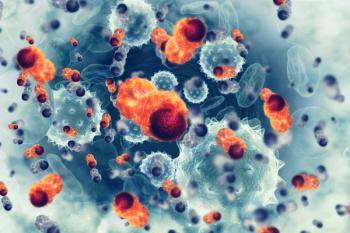
Oncology NEWS International
- Oncology NEWS International Vol 5 No 1
- Volume 5
- Issue 1
Hypoxic Environment May Lead to Tumor Resistance
PALO ALTO, Calif--New research into the nature of malignant cells deep within the interior of solid tumors suggests a possible explanation as to why tumors with large hypoxic areas tend to be aggressive and treatment resistant.
PALO ALTO, Calif--New research into the nature of malignant cellsdeep within the interior of solid tumors suggests a possible explanationas to why tumors with large hypoxic areas tend to be aggressiveand treatment resistant.
The research team, led by Dr. Amato J. Giaccia of Stanford University,studied the central area of tumors where the blood supply is poor,causing hypoxia. Their work in a murine model showed that thehypoxic state stimulates production of the p53 protein, whichcan block cell proliferation or lead to cell self-destruction.
While large numbers of malignant cells in the tumor interior diein this way, some tumor cells in the hypoxic environment acquirea p53 gene mutation that prevents their destruction and allowsthem to survive with little oxygen, giving them a distinct competitiveadvantage in the hypoxic environment over cells that lack thegene defect, Dr. Giaccia says (Nature, January 4, 1996).
Such tumor cells may be resistant to chemotherapy and radiation,since, thanks to the p53 mutation, they are no longer affectedby the treatment-induced DNA damage that stimulates productionof p53, says Dr. Giaccia and his colleagues at Stanford, MIT,the University of Pennsylvania, and Cold Spring Harbor Laboratory.These resistant cells can eventually take over the entire tumor,producing an aggressive malignancy that is resistant from thetime of diagnosis.
Articles in this issue
almost 30 years ago
HCFA Reevaluations May Affect Chemo Administration Cost Codesalmost 30 years ago
Breast Cancer Info Now on Internetalmost 30 years ago
HDC/ABMT Has Benefits in Multiple Myelomaalmost 30 years ago
Clinical Trial to Study MoAb 17-1A as An Adjuvant to Colon Cancer Therapyalmost 30 years ago
Reporting of Study Comparing Casodex, Eulexin Is Questionedalmost 30 years ago
Limits on Tamoxifen Duration Questionedalmost 30 years ago
ACRO Forecasts Radiologist Surplusalmost 30 years ago
Potency Status Before RT, Not Dose, Determines Post-RT Functionalmost 30 years ago
Dr. Klausner Outlines Goals for NCIalmost 30 years ago
Difficulties in Translating Relative Risks Into Absolute RiskNewsletter
Stay up to date on recent advances in the multidisciplinary approach to cancer.
















































































